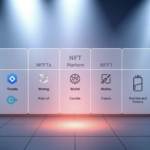Now Reading: Expert Bittensor TAO Cryptocurrency Price Prediction Analysis
- 01
Expert Bittensor TAO Cryptocurrency Price Prediction Analysis
Expert Bittensor TAO Cryptocurrency Price Prediction Analysis

This report synthesizes on-chain fundamentals and technical signals to frame a forward-looking view for U.S. readers.
Snapshot: recent live data showed a market cap near $2.98B, circulating supply around 9.96M, and a rank in the high 30s. Short-term technicals are bearish, with an RSI at 23.85 (oversold) and price trading below key EMAs.
The short-term backdrop suggests a possible relief bounce, yet a broader downtrend remains until $313.14 and higher checkpoints are reclaimed. Early levels to watch include $268.02 support and resistances near $313.14, $357.30, and $414.61.
This piece covers current metrics, sentiment, RSI, EMAs, Bollinger Bands, support/resistance, a 10-day envelope (projected intraday range roughly $287–$325), seasonality effects, and medium- to long-term ranges into 2025 and 2030.
Scenario mapping will translate potential bull, base, and bear paths into watchpoints and invalidate points. All perspectives are informational and not financial advice.
Key Takeaways
- We merge protocol fundamentals and live market snapshots to inform short- and long-term views.
- RSI at 23.85 and price below EMAs point to a relief bounce, not a confirmed reversal.
- Key levels: $268 support; $313 initial resistance; $357/$414 as structural shift checkpoints.
- Near-term 10-day envelope implies a roughly $287–$325 intraday range with upside toward ~$339 if momentum improves.
- Seasonality (June weakness, July strength) may guide tactical entries and risk timing.
- Medium/long-term consensus ranges span ~\$468–\$736 in 2025 and ~\$1,710 around 2030, with higher model variants possible.
Why Bittensor Matters: Protocol fundamentals that drive TAO’s market value
Open, permissionless network structures coordinate global contributors and drive token demand over time.
Decentralized AI network design
The protocol organizes contributors into miners, validators, and specialized subnets. Miners submit trained models, while validators score outputs to reward quality.
Subnets focus on tasks like text generation or image recognition, which helps the network improve utility through specialization.
Utility and issuance mechanics
The token has clear utility: staking to participate, governance for proposals and votes, and payment for AI services. Contributors earn rewards in the native unit based on informational value they supply.
Launched on a Nakamoto-style chain in March 2023, the design follows a four-year, halving-like cadence and ~12-second block refresh. That issuance schedule affects supply and can shape longer-term price behavior.
How fundamentals link to market value: as subnets attract users and stake, transactional and staking demand may rise. Open reward markets encourage builders and can support sustainable value creation—an essential input for any quantitative prediction framework.
Market snapshot in the future context: current price, rank, and supply
This concise snapshot compiles live metrics and recent moves so U.S. readers can quickly place the market state into the broader outlook.
Live metrics at a glance
Current price: $298.96. Rank: #37. Circulating supply: ~9,963,340 TAO.
Market cap: ~$2,978,600,000, placing this asset among large-cap AI-focused projects where liquidity is generally available for active traders.
Recent performance
24h change: down ~$0.42. 7-day: down ~13.34%. 30-day: down ~11.04% (roughly a $33 move).
These declines point to a cooling phase after prior volatility. With a sub-10M supply, even modest demand shifts can move prints sharply, so risk management matters.
- Short-term drawdowns align with bearish technicals; trend followers may wait for confirmation.
- Track live market data and on-chain supply events to time entries and calibrate stops.
Note: This snapshot feeds the technical and scenario frameworks that follow and is intended for informational use, not financial advice.
Technical setup now: sentiment, RSI, EMAs, and key levels to watch
Current technical analysis shows clear trend pressure but also an oversold backdrop that can trigger short relief moves.
Short-term sentiment
Market internals are cautiously bearish: 12 sell signals versus 3 buys and price below all EMAs. That stack favors sellers until clear reclaiming occurs.
RSI: 14-day at 23.85 — oversold and a common setup for mean reversion. Watch for bullish divergence or rising volume to confirm a real turn.
Support and resistance map
Key levels matter for tactical decisions. $268.02 is the downside line-in-the-sand. $313.14 is the first pivot for momentum.
If buyers push through $313.14, next validation zones sit at $357.30 and $414.61. Failure to hold $313.14 raises the odds of testing $268.02.
EMAs and Bollinger Bands
Bollinger context: lower band ~ $286.25, SMA ~ $333.96, upper band ~ $381.66. A tag of the SMA near $333.96 is a plausible bounce target if $313.14 gives way.
Short-term forecast tops near ~$339.51 if momentum improves. In a bearish EMA stack, expect supply around the SMA/EMA cluster; use that zone for measured exits or hedges.
| Metric | Value | Note |
|---|---|---|
| 14-day RSI | 23.85 | Oversold — watch for divergence |
| Signal Count (Buy/Sell) | 3 / 12 | Seller bias |
| Bands & SMA | Lower ~$286.25, SMA ~$333.96, Upper ~$381.66 | Volatility envelope |
| Key levels | $268.02 / $313.14 / $357.30 / $414.61 | Pivot and validation zones |
- Watch for bullish RSI or MACD divergence and rising OBV to confirm bounces.
- Use tight stops below $268.02; liquidity thins and stops can cascade.
- Re-assess sentiment daily as oversold breadth can flip quickly.
Near-term path: Bittensor price prediction for the next 10 trading days
The next ten sessions are likely to trade inside a defined intraday envelope with an upside bias if key resistance clears.

Projected intraday band: $287–$325, with daily prints clustering in the low-to-mid $320s. Tomorrow’s forecast is near $318.51, followed by a sequence of prints that include $329.57, $320.56, and $331.68, with a potential peak around $339.51.
The first validation is a decisive daily close above $313.14. Without that, rallies risk stalling and reverting to range lows or the lower Bollinger band near $286.
- Staged entries on dips toward $300–$305 can work with tight stops and improving breadth.
- Trim exposure near the SMA (~$334) if selling pressure reappears.
- Key downside: $268.02 — a breach would extend the correction and invalidate this 10-day map.
| Day | Projected print | Role | Note |
|---|---|---|---|
| Tomorrow | $318.51 | Reference | Start of measured bounce |
| Mid-window | $323–$334 | Range | Low-to-mid 320s cluster |
| Peak attempt | $339.51 | Upside target | Needs catalyst or broad risk-on flows |
| Invalidation | $268.02 | Fail point | Extends correction; avoid adding |
Execution notes: watch volume and spread for confirmation and read the tape around $313.14. Seasonal flows into october 2025 may gradually influence direction, but level-based discipline remains primary.
Seasonality and monthly tendencies: best and worst months for TAO
A brief look at historical months reveals a recurring rhythm between June weakness and July strength.
Simple seasonal map: July has closed higher in all three sample years, while June closed lower each time. This creates a clear short-sample edge traders can note.
September shows mixed results: the last day closed above the open only once in three years. That implies a neutral-to-cautious stance without fresh catalysts.
- Tilt exposure into July when breadth and momentum align; consider de-risking in late May/June.
- Use seasonality as a secondary input—pair it with technicals like RSI or support/resistance.
- Log month-to-month variance to refine expectations as the dataset grows.
| Month | Outcome (sample) | Note |
|---|---|---|
| June | Down 3/3 | Consistent weakness |
| July | Up 3/3 | Consistent strength |
| September | Mixed 1/3 up | Cautious neutral |
Caution: short histories reduce statistical power. Macro news, liquidity shifts, or major AI headlines can override seasonal tendencies. Treat seasonality as a guide for sizing, not a sole trading rule.
Bittensor TAO cryptocurrency price prediction analysis
Here we translate data and market structure into specific entry, exit, and invalidation levels.

Aligning informational intent with actionable insights
Framework: combine protocol fundamentals (utility, issuance, governance) with quantified technicals — RSI, EMAs, Bollinger bands, and support/resistance.
Action points: stage buys on dips toward $300–$305 with tight stops. Trim or hedge near the SMA cluster around $333–$339. Use $313.14 as the first momentum pivot and $268.02 as the clear invalidation line.
Signal conflict favors caution. An oversold RSI supports tactical bounces, while a bearish EMA stack argues against aggressive trend bets.
- Favor range and scenario bands over single-point targets.
- Let daily volume and tape guide adjustments; update plans each session.
- Use seasonality (July strength, June weakness) only as a tiebreaker when technicals are balanced.
| Horizon | Focus | Action |
|---|---|---|
| Near-term | Entries/exits | Staged buys; tight stops |
| Medium | Range management | Monitor protocol adoption |
| Long | Scenario bands | Adjust conviction by network progress |
Risk control: size positions to account for dual AI and crypto market swings. Maintain strict invalidation discipline to limit drawdown.
Next sections translate these scenarios into calibrated forecasts and catalysts for the coming years.
TAO price prediction 2025: ranges, catalysts, and ROI potential
Overview: For 2025, consensus models center on a base range near $467.87–$735.76, with alternative scenarios projecting substantially higher prints if adoption and liquidity accelerate.
Key estimates and upside cases
Most models place the base 2025 range around ~$468–$736. Alternate datasets show October and year-end spikes near ~$1,120–$1,240, while bullish frameworks extend toward ~$1,443.
ROI context and milestones
From a recent reference zone near $300–$425, upside cases imply roughly 60%–200%+ gains depending on entry and scenario choice.
- Catalysts: subnet adoption, enterprise AI integrations, protocol upgrades, and liquidity cycles.
- Milestones: reclaiming $357.30 and $414.61 tilts odds toward the upper base range; sustained prints above $500 validate momentum.
- Risks: failure to scale subnets, regulatory headwinds, or broad risk-off could pin the market near the base floor.
| Scenario | Range / Target | Note |
|---|---|---|
| Base | $468–$736 | Default median models |
| Alt | $1,120–$1,240 | October/year-end skew in some datasets |
| Bull | Up to $1,443+ | Contingent on clear adoption progress |
Execution tip: ladder entries and take partial profits on volatile spikes while preserving core exposure if catalysts materialize. Track monthly closes for confirmation of a higher-high sequence into year-end.
Mid-cycle view: 2026 to 2030 projections and trend drivers
The mid-cycle outlook maps a path from consolidation to potential multi-year appreciation if adoption and liquidity evolve favorably.
Baseline range: models cluster the 2026 max near ~$562, with a practical band around ~$480–$560. By 2030 the consensus centers near ~$1,710, though dispersion across sources is wide.
Alternative forecasts push higher. DigitalCoinPrice projects roughly ~$2,300 by 2030, and a few bullish teams outline multi-thousand targets if adoption accelerates.
What could extend the cycle
- Breakout subnets that find clear product-market fit and real usage.
- Rising staking participation that lowers available float and magnifies demand.
- Deepening liquidity on U.S.-friendly venues and institutional flows.
| Horizon | Consensus / Alt | Note |
|---|---|---|
| 2026 | $478–$562 | Mid-cycle band; technical confirmation needed |
| 2030 (consensus) | ~$1,710 | Year-by-year fluctuations expected |
| 2030 (alt) | $2,300–$7,000+ | High variance; contingent on adoption and liquidity |
Technical validation requires sustained higher highs and higher lows across years. Macro drivers—AI investment cycles, U.S. regulatory clarity, and risk-on liquidity—often sync with major uptrends.
Practical note: expect cyclical corrections. Build a dashboard of on-chain and off-chain metrics to track developer momentum, subnet usage, and security signals year over year. Use those signals to size exposure and manage risk.
Long horizon: 2031 to 2040+ valuation scenarios
When projecting value out to 2040+, models diverge sharply based on adoption and regulatory paths. Long-horizon bands span wide ranges, reflecting uncertainty about network traction and macro trends.
Mid-single-thousand bands: several models list early-2030s outputs around ~$2,459 on the low end and up to ~$6,415 as an upper mid case. Another dataset centers 2032 near ~$5,590 with a max near ~$6,415.
2040 scenario: one projection shows ~\$5,973 as a long-run estimate, while other sources include five-figure upside in optimistic tails.
Tail outcomes and constraints
Realistic tails hinge on market share for AI services, recurring user pay-in, and subnet product-market fit. If adoption stalls, lower bands dominate; if adoption scales, values can exceed conservative bands.
| Horizon | Range / Note | Implication |
|---|---|---|
| 2032 | $2,459–$6,415 | High variance; adoption-dependent |
| 2040 | ~$5,973 | Long-run value if networks mature |
| Tail | Five-figure+ | Requires large market share and liquidity |
- Consider fully diluted cap vs. plausible AI TAM when judging any maximum price target.
- Regulatory clarity and institutional flows materially affect market cap and multiples.
- Plan scenarios with weights; avoid anchoring on a single maximum price.
Investor note: long-horizon positioning suits those prepared for multi-year volatility and non-linear cycles. Use scenario-weighted sizing rather than all-in bets.
Scenario analysis: bull, base, and bear paths for TAO
A clear scenario map helps traders decide when to scale in or step back.

Overview: Each path ties level-based confirmations to observable signals. Use these routes to classify momentum and align sizing with conviction.
Bull case
Daily closes above $313.14 followed by sustained prints over $357.30 confirm a momentum shift. Holding above $414.61 opens room toward SMA and upper band expansions.
Under this path, rising volume, improved breadth, and subnet adoption headlines validate demand-driven value accretion. Traders may scale exposure on confirmed follow-through and higher-high daily closes.
Base case
Expect range-bound action between $268.02 and $313.14. Mean-reversion rallies can touch the low $330s but often meet sellers at the SMA/EMA confluence.
This path produces chop and false breakouts. Patient, level-based execution with tight risk controls typically outperforms directional chasing here.
Bear case
A breakdown under $268.02 risks a push into lower volatility bands. Oversold readings may fail to attract buyers as momentum decays.
Prioritize capital preservation in this scenario. Avoid averaging down unless breadth and on-chain usage show clear structural improvement.
- Sentiment can flip quickly; use tape, real-time volume, and level reactions to classify the active path.
- Align position sizing with scenario confidence; scale only after clear confirmation.
- One or two strong daily candles around key levels can meaningfully change the outlook.
| Scenario | Key confirmations | Primary risks | Execution tip |
|---|---|---|---|
| Bull | Closes > $313.14 then > $357.30 | False breakouts, weak volume | Scale on follow-through and rising breadth |
| Base | Range $268.02–$313.14; rallies to low $330s | Chop, repeated SMA resistance | Use tight stops and measured entries |
| Bear | Break | Prolonged oversold, low buyer interest | Preserve capital; wait for structural signs |
Tokenomics and supply dynamics: issuance, scarcity, and halving cadence
Issuance cadence matters. The protocol mints blocks roughly every 12 seconds, creating a predictable emission rhythm markets can model.
This regularity allows traders and allocators to build scenario maps for future circulating supply across the next few years. A four-year halving cadence reduces new issuance periodically, tightening net new token flows if demand holds.
Staking links directly to float. When more holders stake to participate and govern, liquid supply on exchanges falls and even modest demand can move market price. Governance and payments use the native unit, so utility and roadmap decisions also affect perceived value.
- Track staking participation rates to spot shrinking float and potential short-term rallies.
- Monitor unlock schedules; clustered unlocks can dilute liquidity and pressure price.
- Use predictable emissions to calibrate multi-year prediction models rather than guessing supply changes.
| Metric | Value | Implication |
|---|---|---|
| Block refresh | ~12 seconds | Predictable emissions |
| Halving cadence | Every 4 year | Tightens new supply over time |
| Staking impact | Reduces liquid float | Can amplify price reactions |
Risk and opportunity map: what could go wrong—or right
Understanding what could fail — and what could accelerate growth — helps size risk and spot tactical buys.

Key risks
Centralized competition. Big tech firms hold scale, data moats, and capital that can outmatch open networks on speed and reach.
Regulatory uncertainty. U.S. rulings on crypto-linked projects will shape institutional appetite and could compress valuation if unfavorable.
Execution and quality. Scaling validator scoring, preventing Sybil attacks, and keeping model quality high across subnets are operational hurdles that can hurt adoption.
Liquidity constraints. Limited exchange access in the U.S. impairs market depth and can widen spreads for this asset.
Opportunities
Open-source appeal. Transparent rewards and performance-based incentives can attract builders turned off by closed ecosystems.
First-mover network effects. If developer mindshare and user demand coalesce, usage-driven demand may compound token utility and support higher price levels.
Practical investor guidance
- Treat any investment as high beta to both AI and crypto narratives; size positions to risk tolerance.
- Use hedging and staggered profit-taking to manage large swings while keeping upside exposure.
- DYOR: monitor protocol milestones, governance votes, and U.S. regulatory updates before you buy or adjust exposure.
| Factor | Impact | Action |
|---|---|---|
| Regulation | High | Monitor rulings; use size limits |
| Execution risk | Medium | Watch validator metrics and model audits |
| Network effects | High | Favor staged buys on evidence of adoption |
Strategy considerations for U.S. readers: timing entries with sentiment and levels
Time entries to align with market mood and clear chart confirmations. Combine a macro gauge like the Fear & Greed Index with micro signals to improve timing around the current price zone.
Using Fear & Greed, RSI, and support/resistance for risk-managed entries
Treat the fear greed index as a readiness signal, not an order ticket. When sentiment shows extreme fear, lean toward staged, small probes near support.
Use RSI (14) at 23.85 as an alert that momentum is stretched. Wait for confirmation: daily closes above $313.14 or improving breadth before adding size.
- Staged entries in thirds: initial probe near support-on-holds; add on a breakout above first resistance; final add on a successful retest.
- Set measured targets: SMA reversion near ~$333.96 and stretch targets in the ~$339–$357 band.
- Invalidation: a decisive break below $268.02 with rising volume means step aside and preserve capital.
| Execution | Guideline | Note |
|---|---|---|
| Stops | Below structural levels | Update as higher lows form |
| Sizing | Adjust for intraday volatility | Use the $287–$325 envelope |
| Venue | U.S.-compliant exchanges / non-custodial | Consider KYC, tax tracking |
Practical tip: log the fear greed readings, level tests, and indicator shifts in a trade journal. Respect tax and reporting rules for any investment and consult a U.S. tax professional for specifics.
Where the TAO trend stands—and what to watch next
Trend status: Trend pressure remains intact, yet stretched momentum can spark a tactical bounce in the near term.
Immediate watch: a daily close above $313.14 is the first confirmation for follow-through toward the SMA zone near ~$334–$339 and a possible test of $357.30.
Risk line: keep $268.02 as the defense level; losing it would extend the drawdown and reset any short-term price expectations.
Volatility is bounded by Bollinger bands (~$286–$382). Use the tape and time-of-day flows—early October events and U.S. macro data can swing the market quickly.
Keep process discipline: reassess after each key level test, track subnet and governance updates, and stay nimble with timely exits and measured re-entries.















